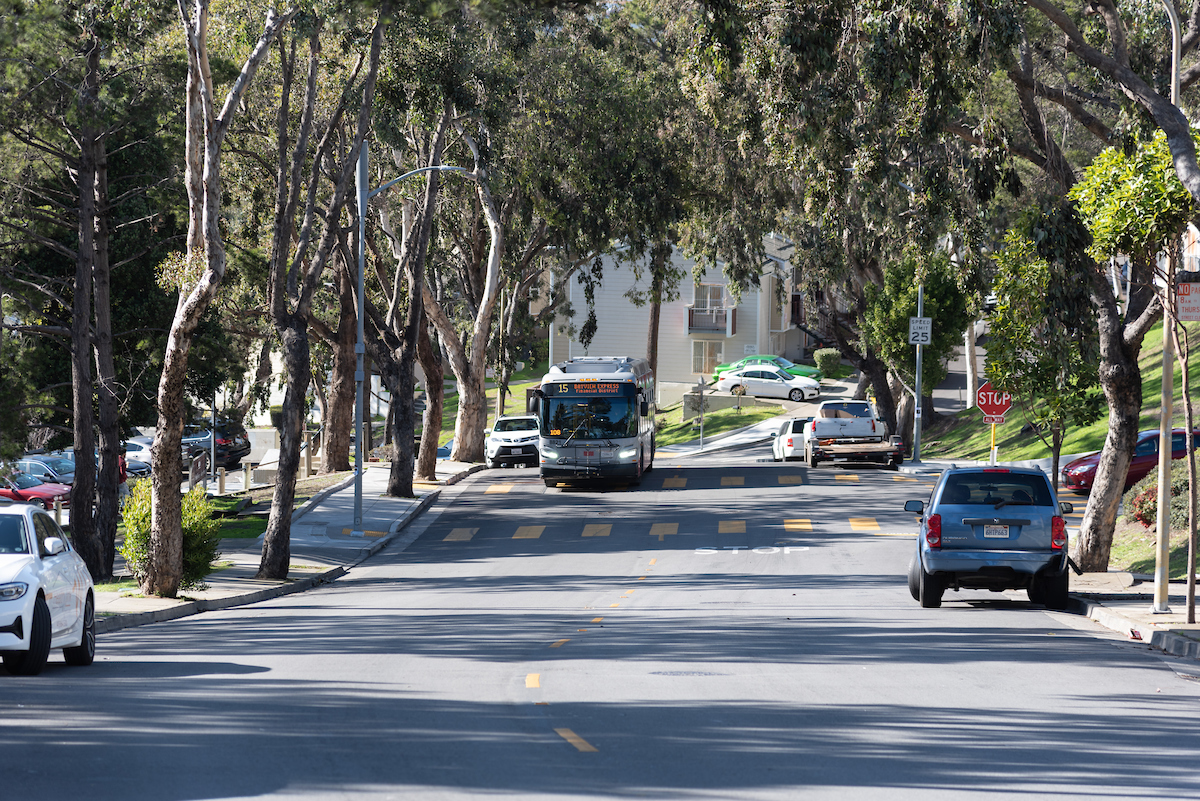By Brian Haagsman
 The 15 Bayview Hunters Point Express route will add new stops in Hunters Point and SoMa.
The 15 Bayview Hunters Point Express route will add new stops in Hunters Point and SoMa.
Beginning Saturday, Jan. 20, the SFMTA will be adjusting Muni service on some routes to address crowding, including for school travel times. We’re also making several stop changes based on rider feedback and our own observations to add new connections and make Muni more reliable.
New Connections on the 15 Bayview Hunters Point Express
Since it launched in early 2021, the 15 Bayview Hunters Point Express route has been a key connector between neighborhoods. Connecting Bayview-Hunters Point, Dogpatch, Mission Bay, SoMa and the Financial District, the route was initially designed based on community input. Now we’re adding stops at two locations based on feedback from riders and operators:
-
Hudson Avenue and Cashmere Street will have new stops for both inbound and outbound trips. We’ve heard from residents in Hunters Point that the 15 Bayview Hunters Point Express fills a unique need, but existing stops are spaced far apart.
-
Near the 4th and King Caltrain Station, new stops are being added at 3rd and Brannan streets (inbound) and 4th and Berry streets (outbound) to create a new connection for riders looking to transfer between Muni and Caltrain. As part of this change, the stop nearby at 4th & King streets served by the T Third bus and 91 Third Street bus will be relocated a half-block south to help with congestion at the 4th and King streets intersection.
To reflect the travel time of the route more accurately, we are updating the weekday frequency from every 10 minutes to every 12 minutes. We will still be dedicating the same resources to this route, but this frequency reflects the actual travel time along the route and is expected to improve reliability for 15 Bayview Hunters Point Express riders.
Balancing Service to Address Crowding
Since the 2023-2024 school year started in August, we’ve heard from families and observed crowding on some lines that serve schools, especially during morning commute times. At times the bus is so full that it must pass up waiting riders. We’ve also noticed that some popular routes are crowded throughout the day. As a result, we are making small frequency increases.
Increased frequency at select weekday times:
Increased frequency on weekends:
The SFMTA continues to face financial constraints that limit our ability to expand service. That means that adding service on any route requires taking it from another route. As a result, we are monitoring ridership across routes to address changing travel patterns and only adding service where crowding is an issue. To increase frequency on the above routes, we must decrease weekday frequency on others.
Decreased weekday frequency:
-
5 Fulton and 5 Fulton Rapid with combined local and rapid frequency will change from every 4.5 minutes to every six minutes. Additionally, the 5 Fulton will change from every nine minutes to every 10 minutes on weekends.
-
9 San Bruno with combined local and rapid frequency will change from every 5.5 minutes to every six minutes.
-
33 Ashbury/18th Street frequency will change from every 15 minutes to every 20 minutes.
Other Stop Changes
-
As part of the 16th Street Improvement Project, the 22 Fillmore stop at 16th and Dolores streets will move from the nearside of the intersection to the far side. This move will be made in both directions to improve reliability and travel times. Existing shelters will be relocated to the new stop locations.
-
The 58 Lake Merced stop at Sunset Boulevard and Lake Merced Boulevard will be removed in both directions to improve reliability and travel time. This low-ridership stop has poor connectivity to nearby streets and is just a two-minute walk or roll (less than 500 feet) from stops at Sunset Boulevard and Ocean Avenue, which are wheelchair accessible and include seating.
Safety is always a priority on Muni. If you experience or witness customer or operator harassment on Muni, report it directly to the SFMTA by calling 311 or using the 311 mobile app or the Muni Feedback form (SFMTA.com/MuniFeedback).
Published January 04, 2024 at 01:52AM
https://ift.tt/3JreROx
Comments
Post a Comment